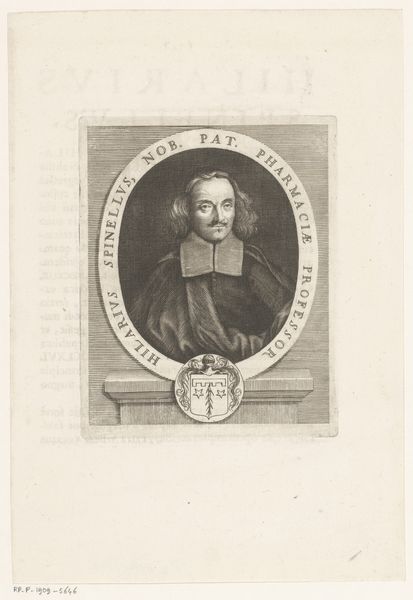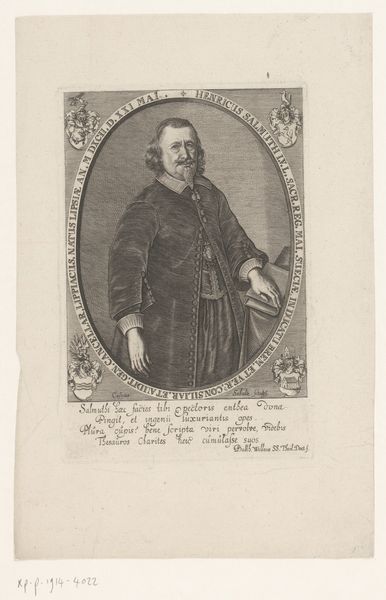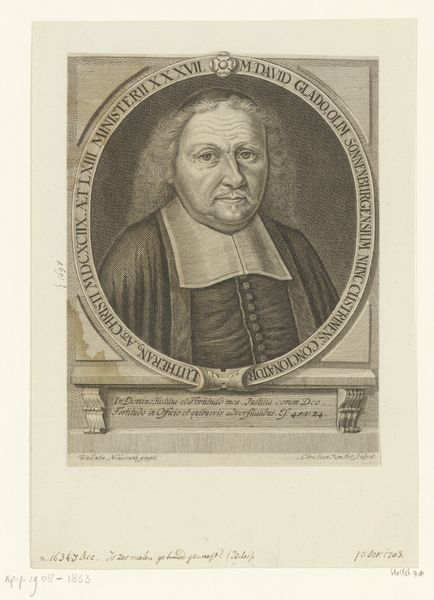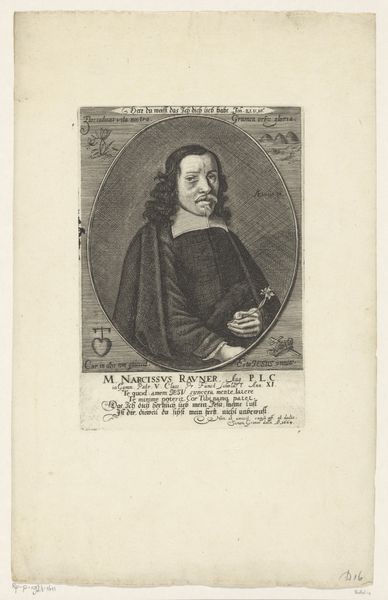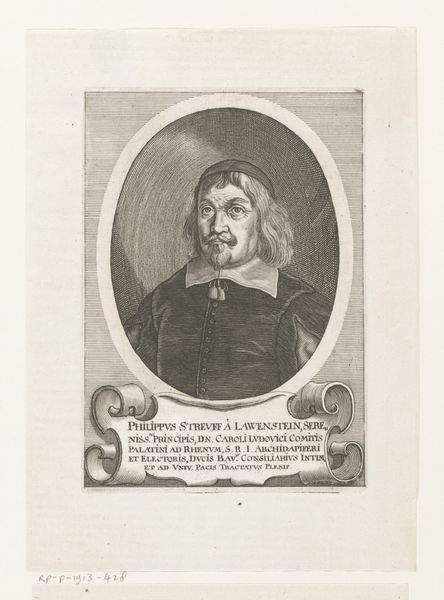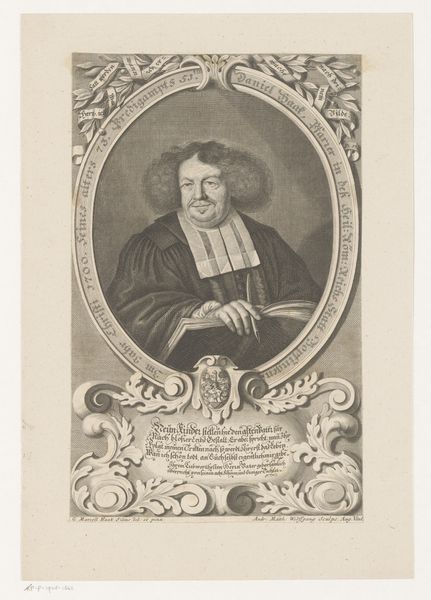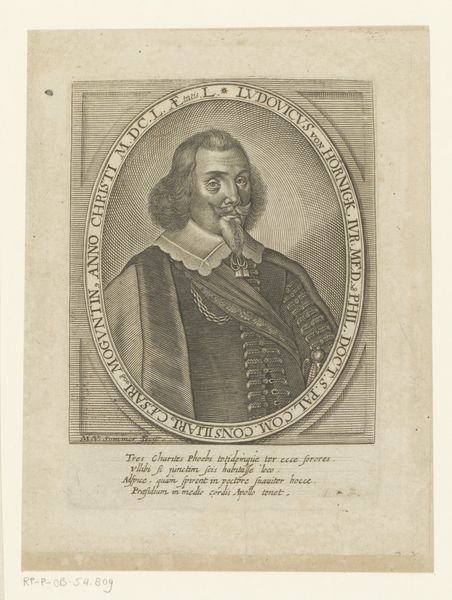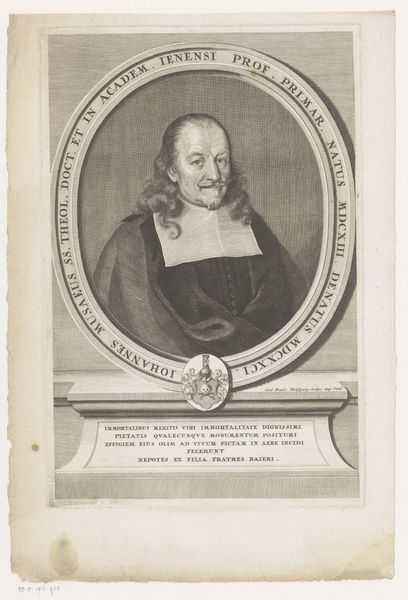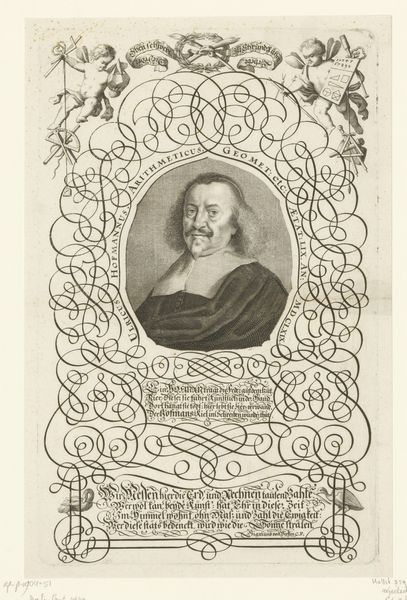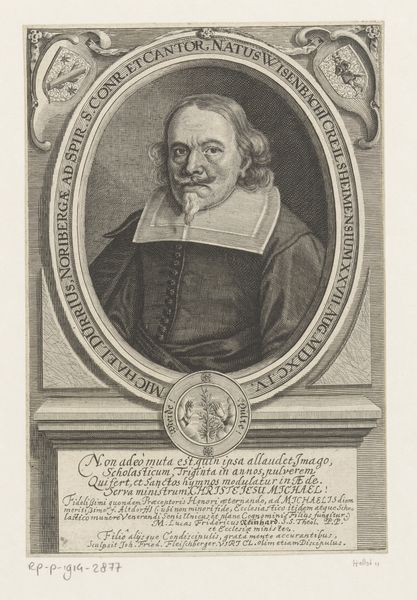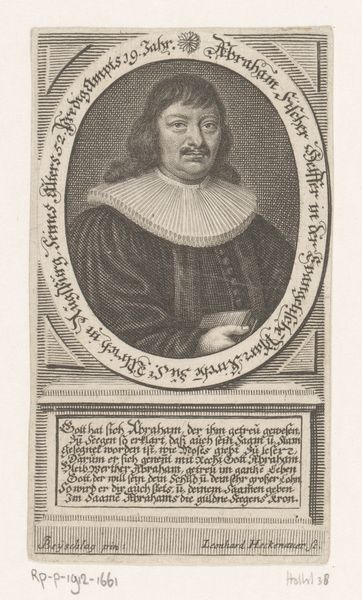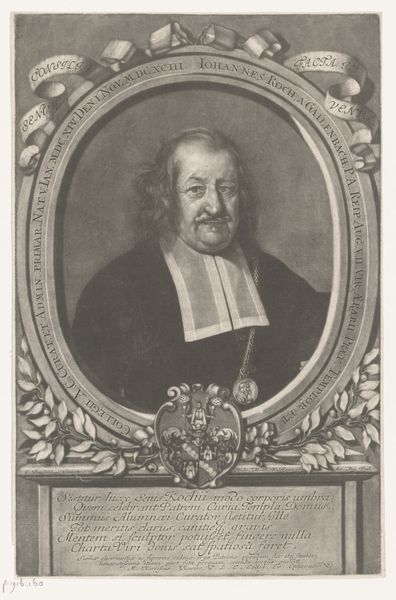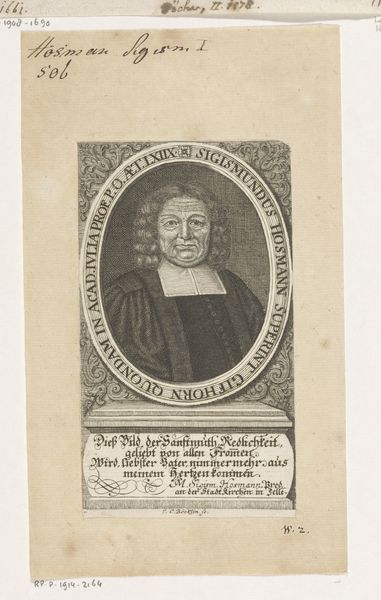
paper, engraving
#
portrait
#
baroque
#
old engraving style
#
paper
#
engraving
Dimensions: height 193 mm, width 153 mm
Copyright: Rijks Museum: Open Domain
Curator: Here we have a rather fascinating engraving titled "Portret van Balthasar Timaeus von Güldenklee," made sometime between 1692 and 1741 by Gabriel Uhlich. It’s rendered on paper in an old engraving style. What’s your immediate take on it? Editor: Well, the most obvious thing is the feeling of formal stuffiness. The portrait is surrounded by ornate symbols and lettering; even his hair seems carefully constructed. The guy himself doesn't exactly look thrilled to be there either; but something in the etching gives him a subtle vitality. Curator: Yes, the lettering framing the portrait is quite deliberate. It’s all part of imbuing him with status—announcing his name, titles and position: “In Neugarten et Ruzenow Hereditarius”, and surrounding it with symbols of family, place and identity. Consider how each visual element amplifies the impact of the text. Even that stern expression. Editor: It's that contrast between the stiff formality and a glimmer of inner life that draws me in. It feels very Baroque in that sense, full of carefully constructed grandeur and also somehow deeply human. And this face does tell a story, don't you think? Perhaps about responsibility or endurance? Curator: I'm glad you point out the emotional depth, because within the iconographic context, his direct gaze signifies authority and presence. Look at how the artist captured light and shadow, guiding our eye directly to his face, thus making him a tangible individual within a symbolic structure. Also, observe how Uhlich masterfully employed varied engraving techniques to delineate between different surfaces. Editor: I'm now wondering about what it was like to actually *be* Balthasar. His is the only face, only real human moment captured here. I like to imagine what it must've felt to actually wear that power... and carry its weight! But that also leads me to considering the power this portrait gave him after life... that in our contemporary moment, his story is still alive because of a work of art... and I think there's incredible meaning in that alone! Curator: A perfect observation that reminds us to consider an image's intended power—as a vessel of lasting remembrance and visual validation. I find that the genius in Uhlich's approach reflects both an outward-facing performance and that interior complexity. Editor: Agreed! It really does capture both the person and the persona, doesn't it? Wonderful, thank you.
Comments
No comments
Be the first to comment and join the conversation on the ultimate creative platform.
